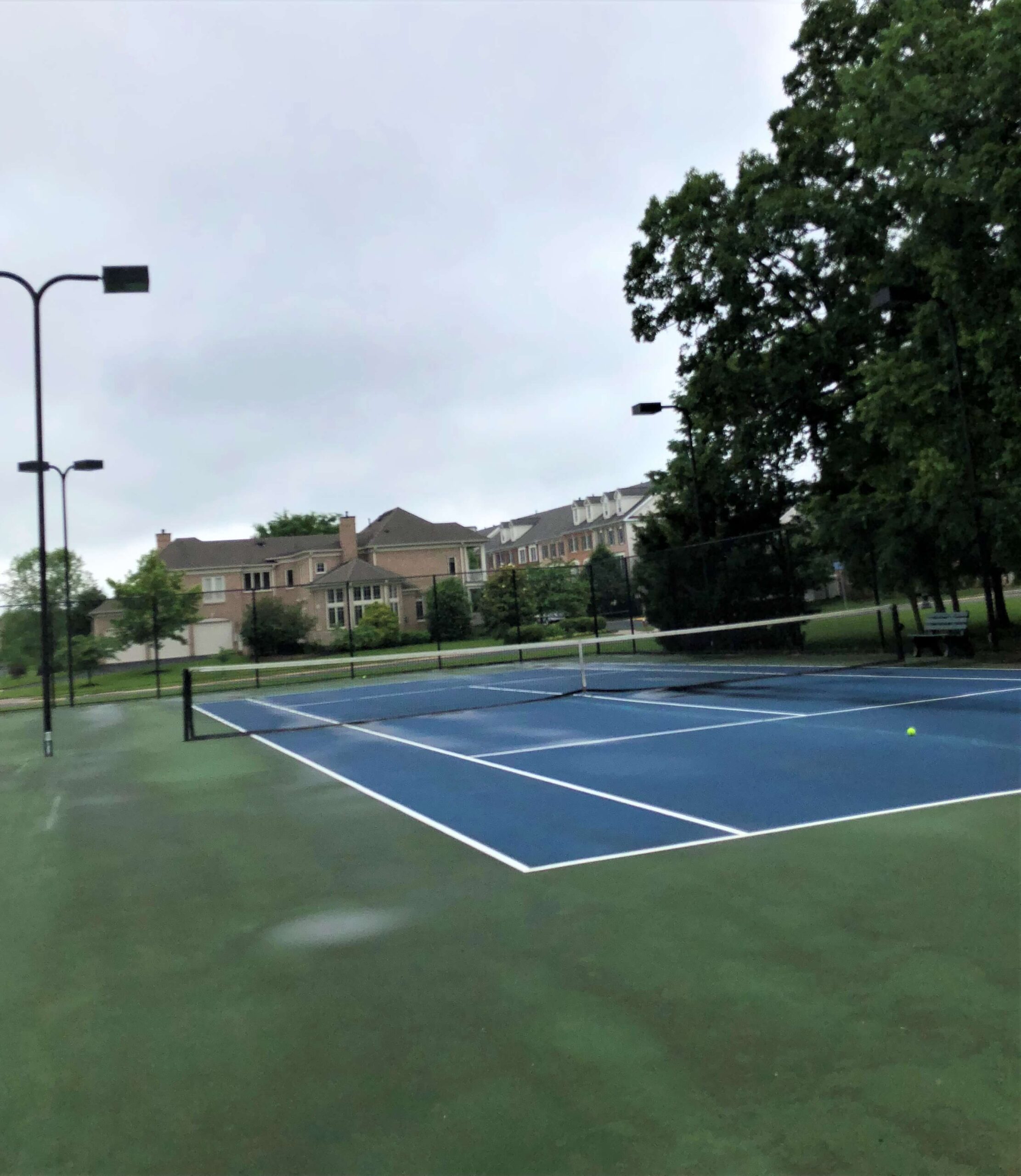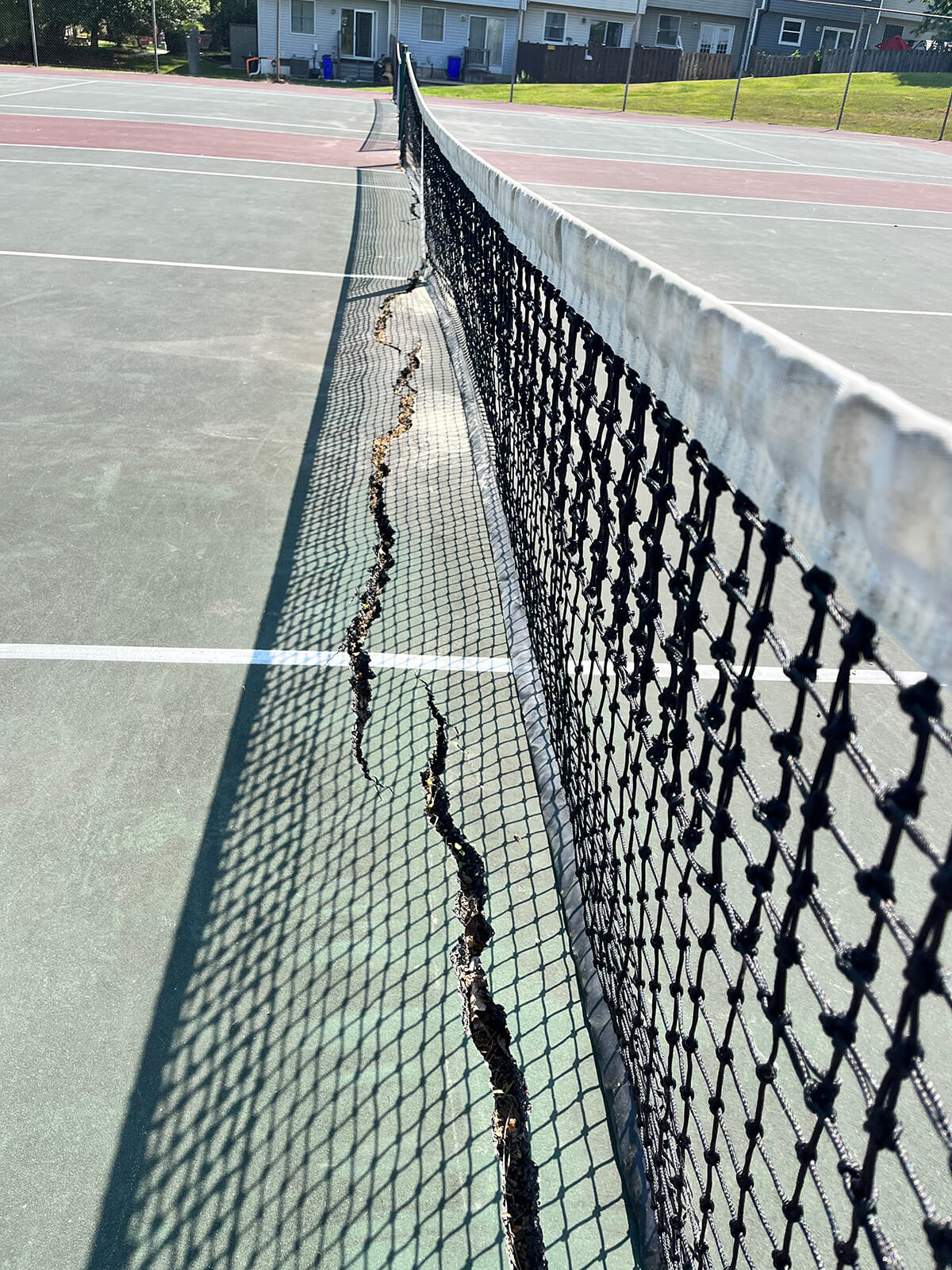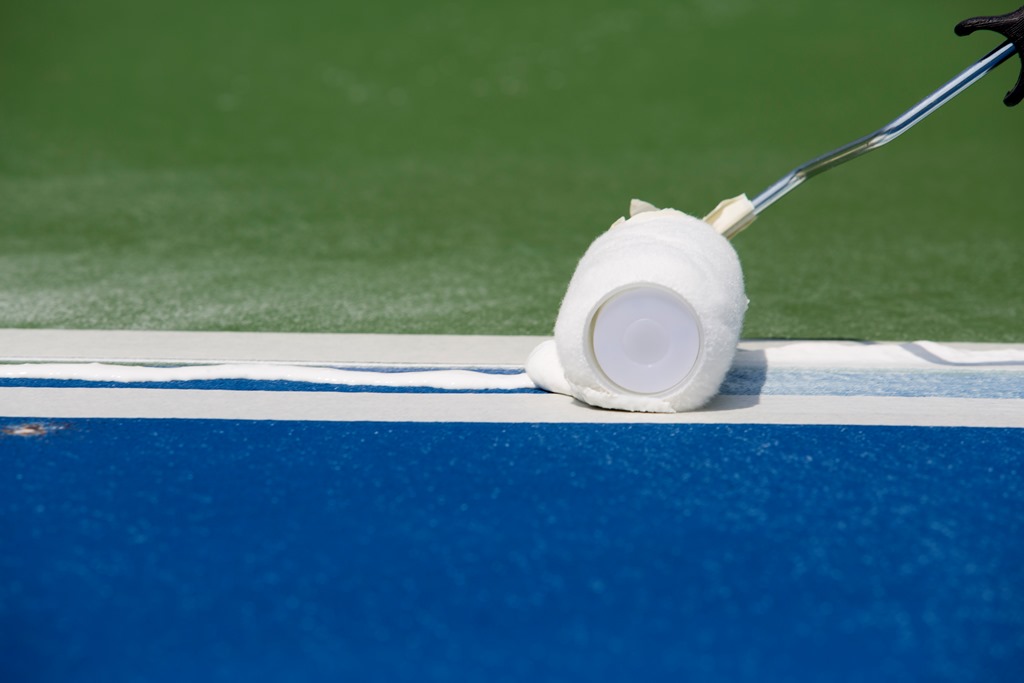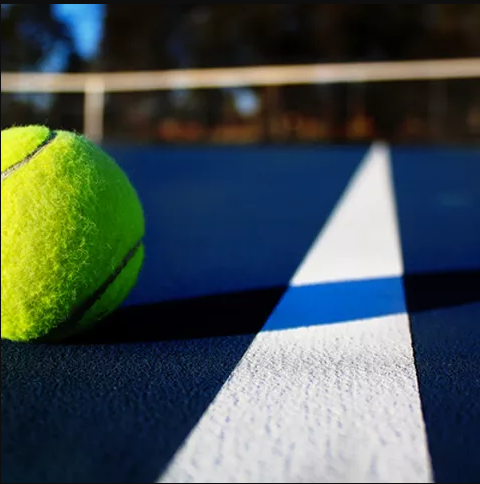Playing Tennis Is Tough Enough On A Perfect Court, Try Playing On One Of These…
No one should end up with a court like these, yet 50% of our business is tennis court repairs on courts built improperly by other contractors. We pride ourselves on being the one of the best tennis court repair companies. Our experienced crews can build new courts that perform flawlessly as well as renovate problem courts like these. You’ll be back on the court in no time!

Tennis Court Resurfacing Contractors
All weather tennis courts require routine resurfacing every four to six years depending upon the amount of play and environmental conditions such as the amount of leaf fall on the court, shade, etc. In addition to performing routine resurfacing, some “interim tennis court repairs” such as pressure cleaning and crack repairs should be anticipated between resurfacing cycles. The purpose of coating a tennis court is to prevent the harmful oxidation and wear of the asphalt surface and to provide sure-footed traction and consistent ball response. If you neglect routine resurfacing and interim crack repairs, you should plan on incurring the major expense of an asphalt overlay.
Like any restoration procedure, the prep work required in resurfacing work is the most critical part of the job. Pressure cleaning, patching, crack filling, etc. constitute the major portion of the resurfacing expense. The actual application of the coatings is the easy part. Installing new coatings without preparing the base properly is a waste of money. No coating will perform, for any length of time, if it is placed over an improperly prepared base. The premature delamination of coatings will adversely affect both court durability and playability. Coming from seasoned Tennis court resurfacing contractors, if you can’t afford to perform proper base prep work, hold off on the resurfacing job until you can.
Note: Tennis court cracks can only be permanently remedied with an asphalt overlay. Cracks repaired in conjunction with routine resurfacing or during interim court repair work are temporary in nature.


Thorough Base Prep Is Essential!




Cracks Should Be Properly Filled
Crack repairs are temporary in nature. However, using correct tennis court repair techniques and quality elastomerics will maximize performance.




Delaminations & ``Repairable Birdbaths`` Are Filled




Coating & Lines Applied



Asphalt Overlays
A Long Term Solution for Cracked Courts
Tennis court repair companies like ours will use asphalt overlays in order to restore courts with major structural cracks, wavy and irregular pavement, excessive surface deterioration, and other factors that cannot be remedied through interim tennis court repairs or routine resurfacing. There are two major types of overlay techniques that will provide long term, trouble-free performance to even the most dilapidated tennis courts. The overlay techniques described below have replaced the outdated approach of ripping out entire courts and reconstructing them from scratch.
Stone Dust Overlay
This technique, often termed a “Slipsheet Overlay”, is an excellent way to renovate old courts that exhibit multiple structural cracks and other surface problems. (Net Post Footings, Center Anchors and Fences are frequently replaced or modified during both types of overlay procedures). Stone dust is placed over the existing courts to an approximate depth of 1” and is compacted with a roller. The stone dust layer serves as a leveling course for the new pavement layers, while more importantly, dissipating the upward force of the existing cracks. This virtually eliminates reflective cracking into the new asphalt section. When the asphalt has cured, a new acrylic playing surface and lines are installed.
This procedure cannot entirely eliminate excessive waviness or improper slope of existing courts. It is risky to attempt a Stone Dust Overlay on Laykold-Type Courts (Cold-Emulsified Asphalt) because such court surfaces and bases generally cannot support the weight of the heavy equipment used in the overlay procedure. When heavy equipment crushes the base, excessive extras can be incurred by the Owner to undercut and stabilize existing bases before the Stone Dust Overlay can be completed. (It is impossible to pave a tennis court properly without a firm, non-yielding base).
